Get ready for a magical exploration into the heart of vintage Turkish rugs. A small odyssey that delves deep into the fabric of history, art, and symbolism. These ancient textiles are not just decor. But a tapestry of stories woven by skilled artisans through centuries. As we unravel the intricate designs and motifs adorning these rugs, we embark on a journey through time. Keep on reading to uncover the rich heritage of handmade rugs and the profound meanings they encapsulate.
A Tapestry Woven Through Time: The Origins
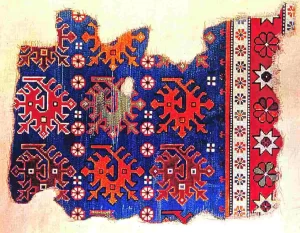
The genesis of handmade Turkish rugs and Persian carpets traces back to ancient civilizations, where they served not only as functional household items but also as luxurious symbols of wealth and status. The history of oriental rugs reveals a fascinating transition from simple utility to complex artistic expression. Nomadic tribes initially crafted these rugs for warmth and practicality. Yet over time, the practice evolved into a refined art form, with each region developing its distinct style and technique.
The Artistic Journey of Rug Making
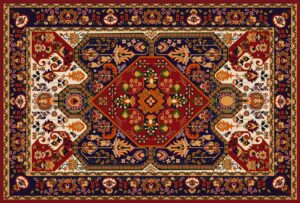
The question of how are carpets made leads us into the heart of traditional dwellings where artisans pass down their skills from one generation to the next. Creating a handmade Turkish rug involves a meticulous process. Starting from shearing wool to spinning, dyeing, and finally, the art of knotting or weaving. Each step is a testament to the artisan’s dedication and skill, breathing life into the raw materials. The motifs and patterns, carefully planned and executed. They all tell tales of the weaver’s surroundings, beliefs, and desires.
The Soulful Artistry of Turkish Rugs
Each weaver, embarks on a journey not just of creation, but of profound storytelling. As their fingers dance over the looms, they weave not just rugs but tapestries of dreams, hopes, and sometimes, the silent echoes of heartaches.
In every knot and twist, a piece of their soul intertwines with the wool. They craft narratives that are as intricate as the patterns before them. Mothers weaves the aspirations she harbors for her children. So, embed symbols of prosperity and protection amid the threads. Young girl, stitches her dreams of love and adventure, choosing motifs that symbolize the journey and the unexpected turns it may take.
That makes handmade Turkish rugs a testament to the spirit of the women who create them. Each rug is a unique masterpiece, a reflection of the weaver’s inner world, her unspoken words woven into a visual lexicon of emotion and experience. The motifs, rich in symbolism, serve as a language through which their stories are told, a language that transcends time and space, connecting the weaver and the beholder in an intimate dialogue.
Decoding the Mystical Motifs and Their Meanings
As these rugs find their places in homes far and wide, they carry with them the essence of their creators—tales of hope, dreams unfurling like the petals of the tulips and carnations that adorn them. Or the resilience mirrored in the steadfast mountains and flowing rivers that frame their borders. These handmade Turkish rugs, with every fiber and knot, become the silent custodians of personal legacies, embodying not just the artistic prowess but the very hearts of the women who wove them.
Thus, in the quiet corners of the world, amidst the looms and threads, the legacy of these artisans flourishes. Their rugs serve as a testament to the power of storytelling through the art of weaving. It would be nice to read those stories, right? For that, you just need to learn the popular motifs.
Animal Motifs
Animal motifs Turkish rug mostly symbolize protection against any kind of evil or malice. From the earliest times weavers have believed weaving part of a dangerous animal on rugs will give them power over it and protection from it. Thus, they use lots of scorpion, the snake, and the wolf’s foot or wolf’s mouth.
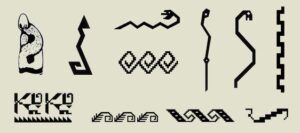
The tiger stripe pattern symbolizes strength and protection, serving as a guardian against evil spirits. The three-spot motif, often found in Turkish kilim rugs, represents a leopard or hyena and is a totem for courage and power.
Hands on Hips
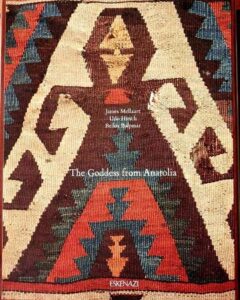
The “Hands on Hips” motif, known as “Eli Belinde,” symbolizes motherhood and fertility. Originating from Anatolian traditions, it draws inspiration from the silhouette of a woman with her hands on her hips, embodying feminine power and the cycle of life. This motif celebrates the nurturing aspect of womanhood, often appearing in rugs to invoke protection and abundance for the household.
Ram’s Horn
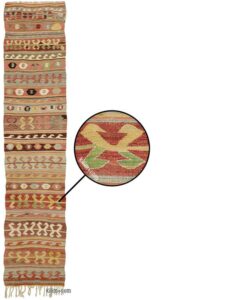
The Ram’s Horn motif represents masculinity, bravery, and strength. It is a tribute to the ram’s significance in various cultures as a symbol of power and virility. Weavers incorporate this motif into rugs to bestow courage and vitality upon the wearer or the space, honoring the animal’s role in nature as a protector and leader.
Hairband
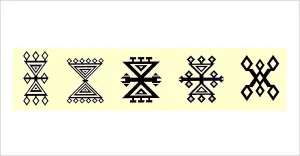
Women from Anatolia often convey their emotions through their hairstyles. Newlyweds braid their hair, attaching multicolored threads to each braid’s end, known as ‘belik’. The hair band pattern symbolizes the aspiration for marriage. When a woman incorporates strands of her hair into the weave, she is manifesting her longing for eternal life. Typically, a hair band serves as an adornment for brides during their wedding celebrations.
Earrings
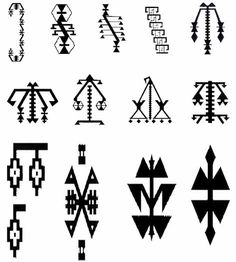
Earrings in rug motifs denote femininity, beauty, and wealth. They symbolize not only adornment but also the wearer’s status and cultural identity. In Anatolia, earrings are a crucial part of wedding gifts. When a girl incorporates this design, she’s signaling to her family her desire to wed.
Burdock
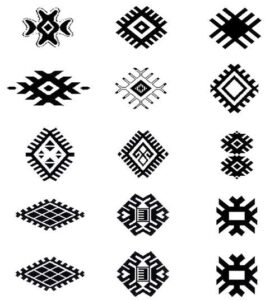
The Burdock motif represents protection and warding off of evil spirits. Inspired by the burdock plant’s ability to cling and protect itself, this symbol is a talisman against negative energies. Meanwhile, the phrase “like a burdock” implies being covered in flowers, which explains why this motif often adorns flour bags as a representation of prosperity. Artisans weave this motif into rugs to safeguard the home and its inhabitants, invoking nature’s protective essence.
Muska / Evil Eye Amulet
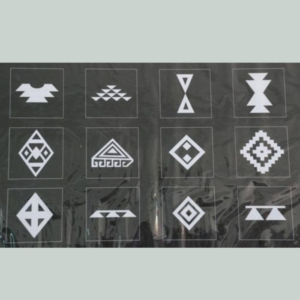
The Evil Eye Amulet motif serves as a powerful protector against malevolence and envy. It embodies the belief in the evil eye’s power to harm and the amulet’s ability to deflect such negative forces. This symbol is a common feature in rugs, offering guardianship and peace to those within its presence.
Family Signs
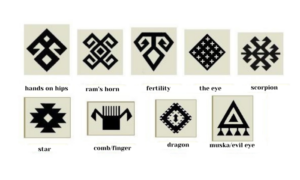
Historically, Turks have adopted distinct symbols to represent their families. These symbols have appeared on both their textiles and tombstones. Mogul historian Residuttin, in his work “Cami-ut Tevarih,” and Kasgarli Mahmut, in his dictionary “Divanu Lugat-it-Turk,” mention that every Oghuz Turks tribe possessed its unique emblem. It’s likely that tribes like Kayi, Salur, Bagduz, Bayat, Avsar, Yazir, Igdir, Eymir maintained their specific symbols upon moving to Anatolia, as evidenced by the motifs resembling these emblems found on many weavings.
Deciphering the Language of Motifs
Each motif, carefully chosen and meticulously woven into the fabric of the rugs, serves as a silent language through which artisans express their deepest hopes, beliefs, and connections to the world around them. These symbols, rich in history and meaning, transform each rug into a narrative, a unique story told through the language of patterns and colors. Perhaps they will tell you their own story,. After all, you now you know what you are looking at.
